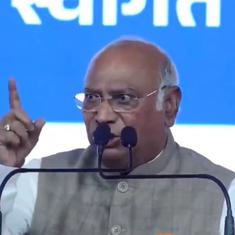During a customary Diwali greeting phone call, the Tamil novelist friend Charu Nivedita described the rather surprising volume of hate mail he received for a blog and Facebook post on his fear and loathing of firecrackers. The correspondents accused him of denigrating symbols of Hindu cultural identity.
For a writer whose recent output has focussed on the merits of native knowledge and the wisdom of ancient seers of India, the charge of being anti-Hindu was particularly perplexing, he said.
Despite the overwhelming evidence of Diwali fireworks worsening the quality of air in India’s cities, and generally inconveniencing vulnerable humans and animals, a section of people have turned the cut and thrust of the cracker debate into a conspiratorial ambush on the Hindu faith’s longstanding traditions.
The chatter about "Diwali/Hindu festival shaming" only makes the air more noxious.
Those crying "Hindu shaming" are stropping their scimitars of Dharma employing a mix of ignorance, reactionary arguments and a sense of imaginary injustice.
The Artha of Dharma
Crackers are as ancient and intrinsic a part of Diwali as tea, our national beverage, is to India.
In fact, the story of fireworks entering the Diwali tradition and tea into everyday Indian life are fairly similar. They have their beginnings in the 1920s and early 1930s. They wiggled their way in thanks largely to the cunning ways of men of commerce.
According to Lizzy Collingham’s delightful book Curry: A Tale of Cooks and Conquerors, at the beginning of the twentieth century, the majority of Indians did not know how to make a cup of tea and were reluctant to drink one. She writes:
"Now that India is both the world’s major producer and consumer of tea, this seems incredible. It confounds the myth that the British acquired their love of tea from their Indian subjects. In fact, it was the British who introduced tea to the Indians. Although they barely changed the way Indians eat, the British radically altered what they eat and drink… the conversion of the population to tea drinking was the result of what must have been the first major marketing campaign in India. The British-owned Indian Tea Association set itself the task of first creating a new habit among the Indian population, and then spreading it across the entire subcontinent.”
They were mighty successful. Indians never had a native tradition of consuming hot, stimulant beverages. But in less than 25 years, tea turned into the most ubiquitous drink in India.
Crackers have had a similarly forced, marketing driven entry into India’s Diwali tradition. The pyrotechnics used by football ultras in Europe is still commonly referred to as the Bengal light, thanks to the saltpeter exports from the region dating back to the 16th century. However there is very little historical evidence linking Diwali and fireworks, or indeed any scriptural sanction.
In temples of Tamil Nadu (the fireworks HQ of India), for instance, the only form of fireworks display was a ritual called Sorkka Paavanai during the festival of Karthigai Deepam in mid-November. It involves a giant bonfire of dried palm leaves to symbolise the column of fire as the embodiment of truth.
A marketing match made in Sivakasi
Having worked in a Bengal match firm, Ayya Nadar and his brother Shanmuga Nadar first set up a match factory, and later in 1924 the country’s first fireworks company in their hometown of Sivakasi. With mass manufacture of fireworks at home thence did the tradition of Diwali crackers even begin to take root.
Contrary to the claims of those feeling Diwali-shamed, it is now a festival so widely celebrated across the world that it has become commonplace for Western heads of state to issue Diwali greetings and host official celebrations.
If anything, many from the community are guilty of turning this festival of light and inner awakening into a unmindful orgy of consumption and excess of every kind. In doing that, they seem remarkably assured and happy to imitate the West.
It is estimated that nearly a half of India’s big-ticket consumer spending (on apparel, appliances, automobiles and more) occurs in the run-up to Dussera and Diwali.
Dussera onwards, irrespective of the state of the economy or the stock markets, the business press and TV in India try to create a feel-good factor about the forthcoming, super-profit bearing new Samvat.
Sattai Muni, one of the 18 celebrated Shaivaite Siddhas of the Tamil tradition, believed to be the spiritual and philosophical successors of the pioneering, Vindhya-crossing Yogic sage Agastya, famously wrote: “Andathil ullathE pindam, Pindathil ullathE andam, andamum pindamum ondrE, arinthu thaan parkum pothE.” When seen through enlightened eyes, the mortal body resides in the cosmos and the cosmos itself resides in it.
There is hardly a more pithy and compelling expression of the quest for inward and outward harmony. But why should we care about the cosmos or its sentient beings when we can afford 10,000-wala crackers?










